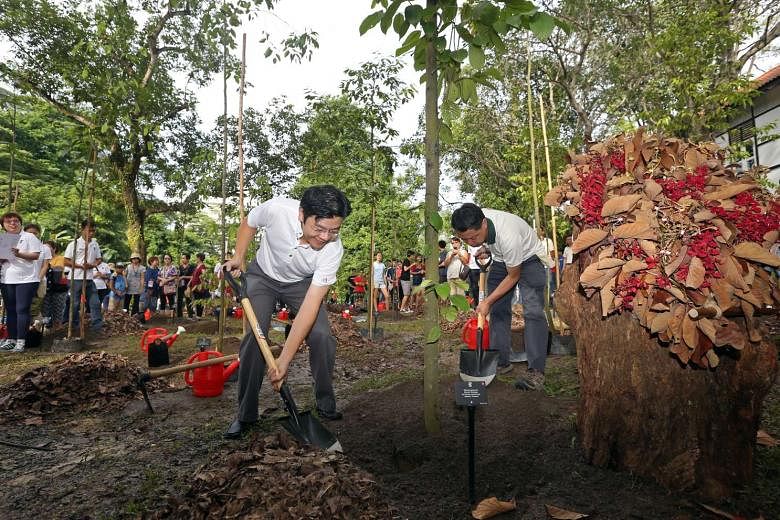SINGAPORE - The country's only Unesco World Heritage Site is set to become bigger than ever, and it is not all about size.
The new 8ha being added to the Singapore Botanic Gardens will help preserve the country's colonial past, and provide a platform to showcase the park's ecological work.
There will also be a living laboratory of giant trees, along with a Natural History Art Gallery to display the Gardens' botanical art collection, the largest in Asia, and those of artists both local and foreign.
All these will be ready by 2018, the National Parks Board (NParks) announced on Saturday.
Minister for National Development Lawrence Wong stressed the need for the Gardens to not rest on its laurels after clinching the Unesco World Heritage status in July.
"We want it to break new grounds in horticultural research and conservation," he said. "We want it to be a place close to every Singaporean's heart, and we want to continue growing it for our future generations and for the entire world to enjoy."
The 8ha is being added to the Gardens' Learning Forest, a previous 10ha extension. The Forest will now occupy 18ha and bring the total area of the Botanic Gardens from 74ha to 82ha, almost four times its original size in 1859.
The extension will include a Forest Conservation Interpretive Centre and the Natural History Art Gallery, which will be housed in colonial buildings more than a century old. The houses were designed by R.A.J. Bidwell, the architect behind Raffles Hotel.
There will also be a 4ha Gallop Arboretum, which will include 200 species of forest giants, scientifically known as Dipterocarps, which can grow up to 80m, the height of a 25-storey Housing Board block. Dipterocarps are iconic to the Indo-Malayan rainforests, but have seen their population decrease over the years due to illegal logging and deforestation. The public will be able to explore the area on elevated platforms as well.


